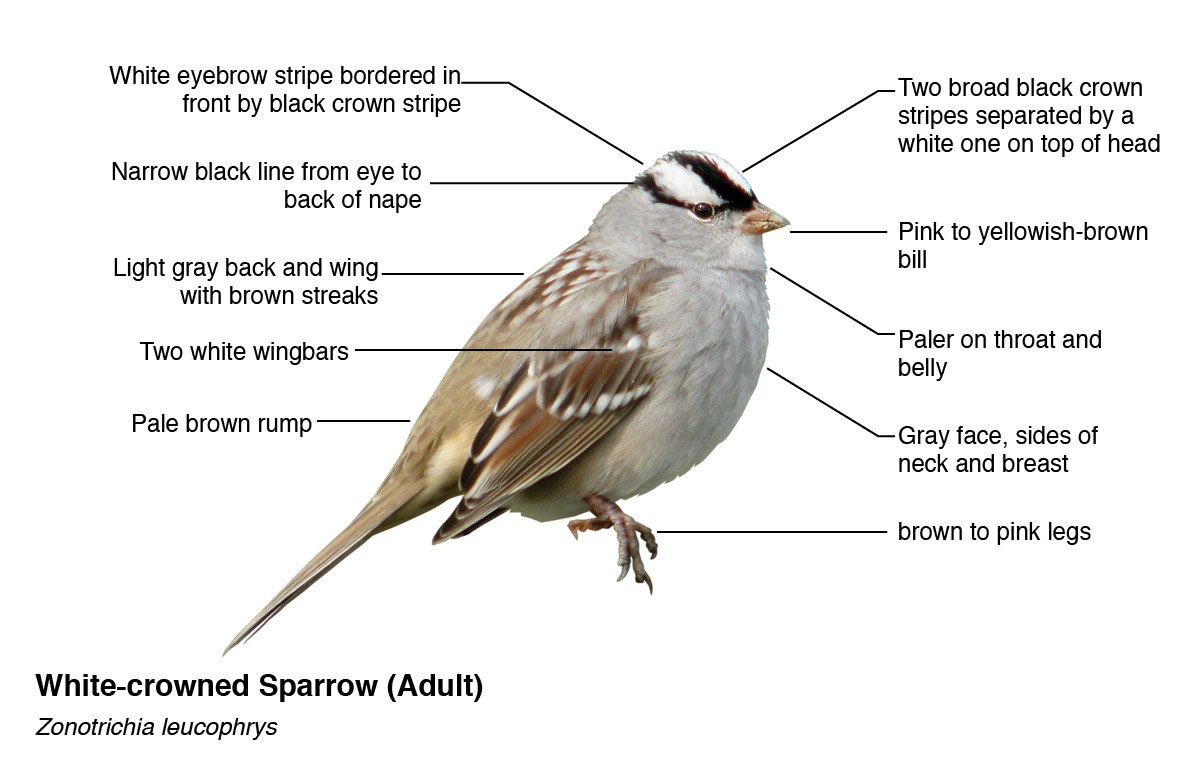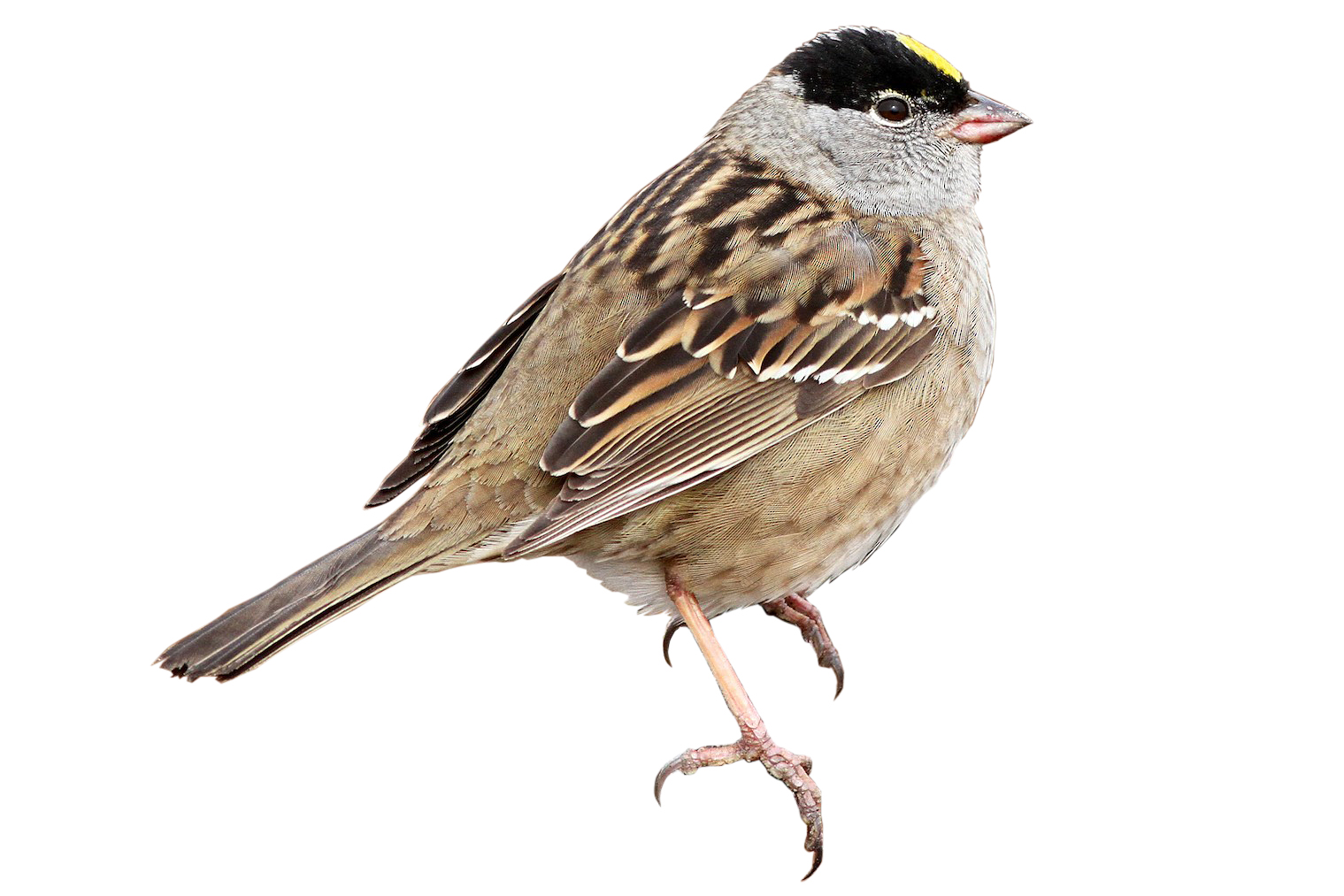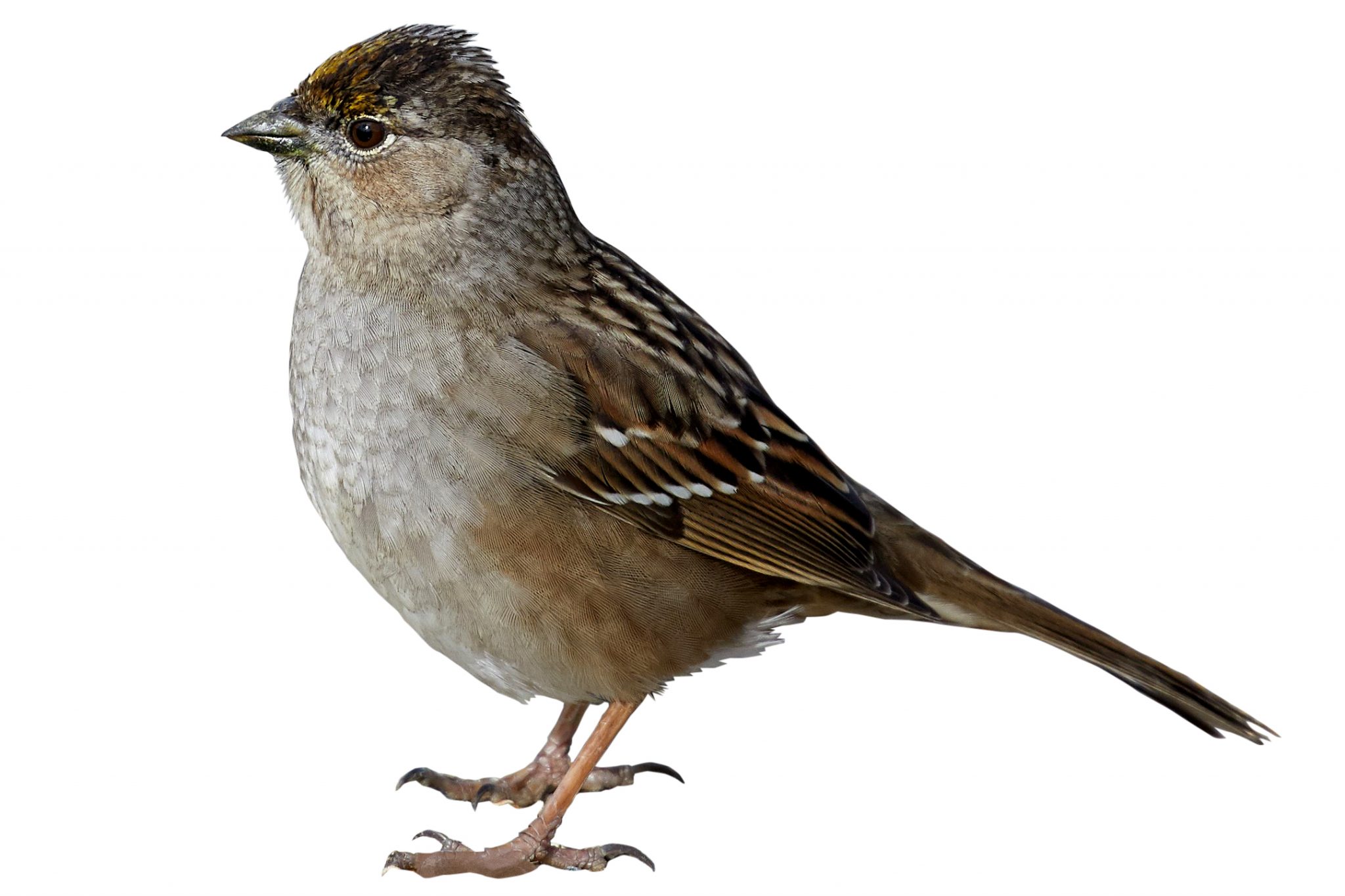White-crowned Sparrow Sample Topic
Explore this sample lesson on the White-crowned Sparrow from Be a Better Birder: Sparrow Identification. It’s just one of the 49 species covered in the self-paced online course.
The White-crowned Sparrow is elegantly marked in gray, brown, black and white. It’s one of the best-studied songbirds in North America. Much of our knowledge of bird song and development is based on studies of this species.
White-crowned Sparrow is a large sparrow with a moderately long tail. The adult has two broad black stripes on the top of the head separated by a broad white crown stripe. It also has a white eyebrow stripe.
There’s a narrow black line going from the eye to the back of the nape. The face, sides of neck and the breast are gray. It’s a bit paler on the throat and belly. The back and wings are light gray, streaked with brown. And the rump is a pale brown. And there are two white wingbars.
Note the bill is pale, either pinkish brown or yellowish. The immatures, the birds on the right, keep this plumage throughout the first winter. Instead of black and white, the crown stripes are brown and buff. The face, sides of the neck, and breasts are gray, but they’re browner than the adult.
The sexes are alike in plumage with the male slightly larger. White-crowned Sparrow breeds from Alaska, eastward across northern Canada and southward along the Pacific coast. And in the western mountains to southern California and northern Mexico. It winters from southern British Columbia, eastward of southern Michigan and southern New York, and southward to the Gulf Coast and central Mexico.
Four of the five subspecies of the White-crowned Sparrow are migratory. But there’s a sedentary race that lives in a very narrow band across the California coast. Oddly, the most widespread race, breeding across northern Canada and wintering in the eastern United States is the least studied and least well known of all the races. White-crowned Sparrow breeds in tundra, boreal forest and alpine meadows over most of its range.
On the West Coast, it’s found in suburban areas and near the ocean in areas with bare ground and shrubs. These birds frequent thickets, weedy fields, agricultural fields, roadsides and backyards.
The song is a series of clear whistles followed by buzzes or trills on different pitches. Let’s listen to that.
The White-crowned Sparrow forages on the ground often in the open. It scratches in the litter with both feet like a good double-scratcher and hops on the ground. Once flushed from the ground, it perches up in small trees or shrubs. This is a relatively friendly sparrow. It forages out in the open, it goes up to a perch when it’s disturbed and it comes readily to pishing.
It winters in loose flocks of mixed species. So, what do I see? I see a large gray-and-brown sparrow with obvious stripes on its head. The striped back and wingbar stand out to me too. The adult really stands out in a flashing black and white against gray. The immature is more subdued but the tan head stripes and the white wingbars are usually obvious. Shape is a key for this sparrow too. It tends to slightly raise its head feathers in a slight crest at the back giving it a very square-headed look. And the white cross on the back of the head is distinctive and totally cool.
There’s significant geographic differences with the most obvious ones being the color of the lores and the bill. Birds breeding in eastern Canada and in the Rocky Mountains, the two right photos, have dark lores, that is, the black line through the eye extends to the bill. And they have pink bills. The birds breeding in western Canada and Alaska, the center photos, have light lores and orange bills.
The birds breeding along the Pacific coast from southern British Columbia southward, those birds on the left, they have white lores and yellow bills. Like almost all sparrows, White-crowned Sparrows start off streaky as juveniles then they molt out of the juvenile plumage before migrating. The facial pattern is still there, but is covered in fine streaks. So, what can you confuse it with? The White-throated Sparrow also has bold black and white on the head, but it has a bright white throat, yellow lores and is more brown than gray.
There are shape differences here too. The White-crown is blockier, shows more of a neck and a square head. White-throat is more rounded overall. The breeding Golden-crowned Sparrow doesn’t have white on the head and it has a yellow central crown stripe. The non-breeding Golden-crown, especially the first winter, are very similar to the first winter White-crowned, but they usually have some yellow on the forehead and a dark bill.
Visual Keys to ID


Compare with Similar Species
These are the species commonly confused with the White-crowned Sparrow:



See more images with the All About Birds Species Comparison Tool
As Seen and Heard in the Field
Practice for the Field
SnapID: Choose the White-crowned Sparrow
Train Your Bird Brain
With SnapID, you get a chance to build up your own mental image of each bird that your brain can tuck away and reference later. If you pause on each pair of photos after you’ve chosen an answer and ask yourself, “What field mark did I use on that one?”, you’ll quickly get a sense of which keys to ID are most helpful for you. Also, try to guess what species the other bird is before you reveal the answer. That way you can get better at identifying two birds in each round, instead of just one. Remember that each time you hit Replay you have new photo match ups to practice on.
This is a sample lesson from Be a Better Birder: Sparrow Identification. In this self-paced online course you’ll get comprehensive coverage of the 49 sparrow species found in the U.S. and Canada as well as identification strategies and quizzes to help you along the way.
